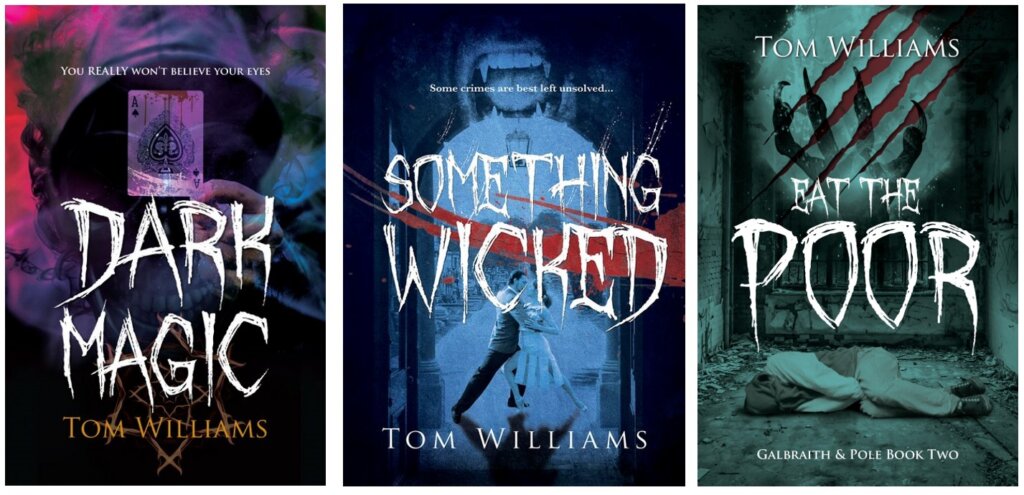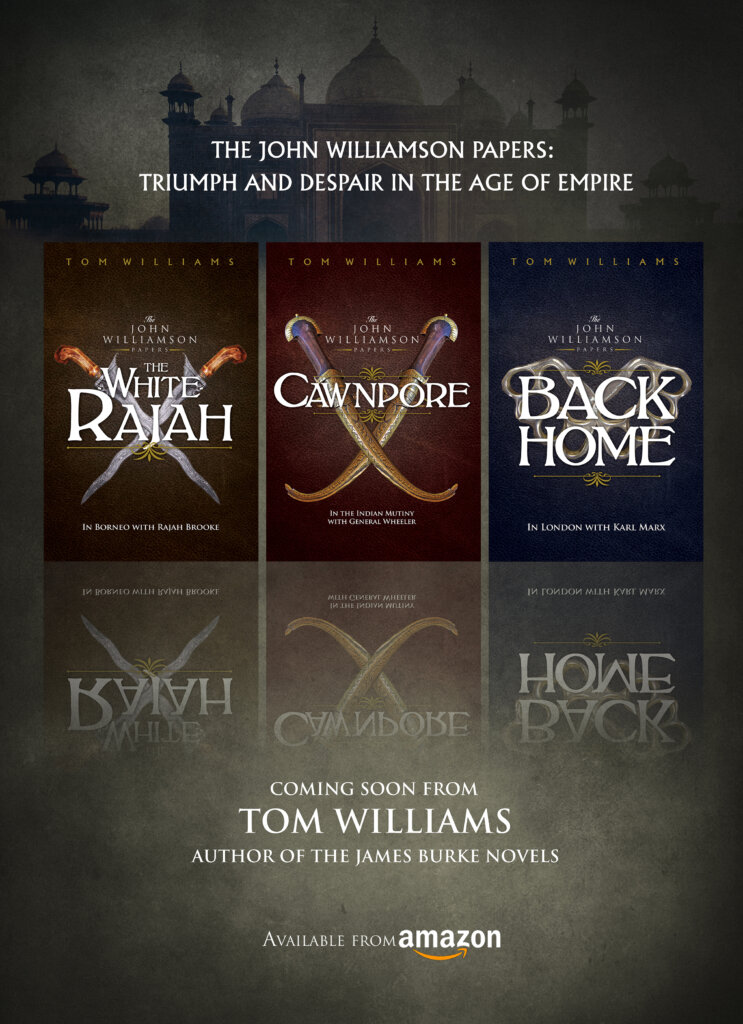This blog post is definitely one for fellow writers, although if readers want to drop in a comment I’d be interested in what they have to say.
I’ve now published twelve books with a thirteenth due quite soon. Most of these are historical novels. That’s six Napoleonic era books about James Burke, and my three books on issues around colonialism and the British Empire in the mid-19th century. Unsurprisingly, the swashbuckling adventures of a British spy in the Napoleonic wars are massively more popular than the heavier books about Empire. That, after all, is why, following advice from my then agent and publishers, I wrote them.
The three books that aren’t historical are all Urban Fantasies. That’s about as far from historical novels as you can get. I love writing them because they are huge fun. There’s a large and enthusiastic audience for Urban Fantasy, so when they first come out they tend to sell quite well, but because there are only three of them (one standalone novella and two short novels which have, as they say, series potential) sales soon fall off.

After doing this for years, I’ve got to the stage where there is a decent readership for the books about James Burke. It means I now have to look more seriously at things like marketing, in the hope that I can keep the ball rolling and continue to attract new readers.
I find myself spending more of my time reading about how to sell books. Sadly, I can end up spending longer trying to find ways to sell the books I’ve already written than writing new ones.
There are lots of ways to promote your books – too many to list. Many people who write about this area, though, say that one of the most effective is newsletters. Newsletters let you build a relationship with your readers, providing a ready market as you produce new books. Newsletters have the advantage that they are cheap and that, although the administration can be a nuisance, actually writing them should come fairly easily.
Newsletters are therefore the first thing that I would like to explore.
I have put a toe in the water of producing a newsletter. There’s a signup form at the bottom of every page on my blog if you fancy a look at it. I’m happy to admit, though, that it doesn’t have many readers. In fact, I seem to reach far more readers through this website (around 3,000 visitors a month) or Twitter (over 2,000 followers) than I am ever going to reach through the newsletter.
An obvious first step in addressing this it is to try to increase the subscriber base. I’ve read that the best way to do this is to give something away to new subscribers.
During lockdown I recorded an audiobook of my Urban Fantasy, Dark Magic. It’s not the most sophisticated recording you are ever going to hear, but it’s fun and, even without my promoting it, it’s sold a handful of copies. Now Spotify have given me codes to give 100 copies away. So there we are: a free audiobook for anyone who signs up to my list.
I decided to trial it first by offering a copy to anyone on my existing list who asked for it. What it showed was a remarkable lack of interest, even amongst those who, according to my list handler, had opened the email offering it.
Thinking about it, the problem might be that most of the people on my list are there because they are interested in my historical fiction and they have no interest in Urban Fantasy. I read some more about how to make a success out of newsletters and was very firmly told by an expert that it was important to have different newsletters for different genres. So should I have one newsletter for historical fiction and a separate one for Urban Fantasy? That’s twice the work and loses the possibility of cross selling from the books of mine that people already know to the much less well known ones. And if I do have a separate list for Urban Fantasy, should I have a separate list for the mid-19th century Empire stories, which also seem to languish unloved by James Burke fans?

And if I do have a newsletter for just one genre, what do I put in it? I produce a blog post every week. Quite a lot of these are about things that might interest readers of historical fiction. Do I have to produce twice as much such material?
Which brings me to another problem I have with author newsletters. I subscribe to a few of these and, say it soft, I usually don’t read them. Even the ones I know are full of good stuff. What can I say? Life is short. But, friend, assuming you are reading this, can you tell me honestly that you read the author newsletters that you are subscribed to? And, if you do read some, but not others, what is it that makes you open them?
I really, really want to run a successful newsletter. To have an army of devoted fans just waiting for the next book to drop. But the more I think of the practical issues (What do I give to get them to sign up? What books do I talk about? What do I actually say in the letter?) the more I find myself recoiling from the idea. But what does that leave me with? Amazon ads? (Expensive, uncertain and involving a lot of effort to get right.)
Come on fellow authors (and readers if there are any still with me): what do you think?
